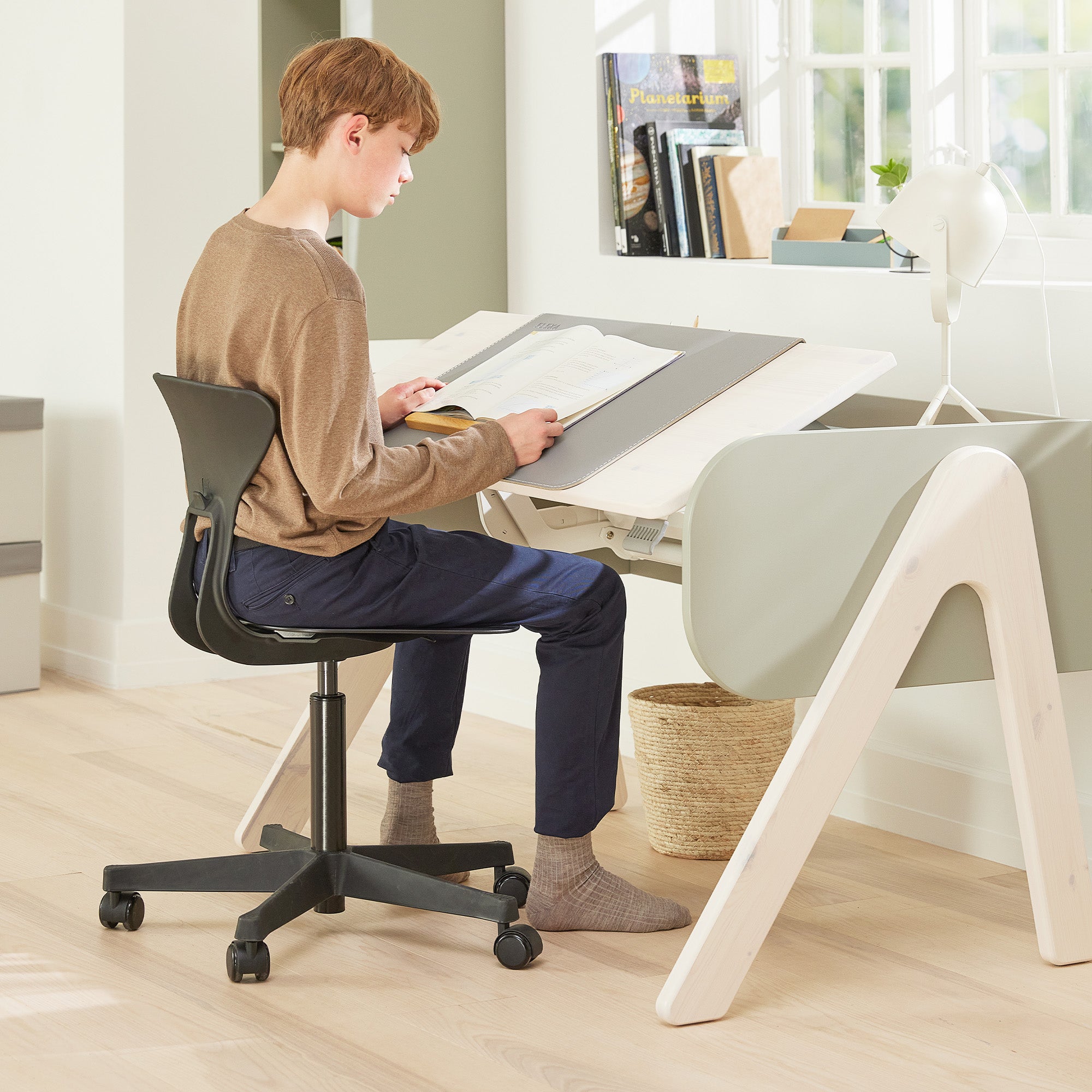A good posture and stable sitting position is important as a base to be able to study and participate in activities that require fine motor control e.g. writing, drawing, or using the scissors. It can help your child develop new skills, make them feel comfortable for longer, and allow your little student to focus better. Read on for Occupational Therapist, Camilla Ejsing’s, best tips for a good ergonomic study posture.
Highlights:
- Feet should be flat on the floor, table at elbow height, knees and hips at 90 degrees.
- Height-adjustable furniture grows with your child and allows them to switch positions easily.
- A tiltable desktop can help protect little necks and also improve the light on the desk.
- Set the computer screen so your child is looking just above it.
- Encourage frequent active breaks to help your child stay energised and motivated.
Below, Camilla Ejsing shares her five best tips to help your child to a good sitting and studying posture:
1. Follow the 90-90-90 Rule
“A good place to start is to follow the 90-90-90 rule. Your child’s knees and hips should be at 90-degree angles when seated by the desk. When your child’s hands and forearms rest on the desk, this should create an approximately 90-degree angle between the arm and the forearm. You also want a firm surface under your child’s feet. Little feet should never dangle, or you will typically experience quite a lot of restlessness. Then your child is sitting correctly. However, the 90-90-90 rule is just a guideline. The most important thing is that the child is feeling comfortable. It’s also important to remember that children should never be sitting still for a long amount of time without being able to switch position and move their body.”
2. Pick a Height-adjustable Desk and Chair
“Children grow quickly, so you will need to adjust their desk and chair often. Some chairs have adjustable seat height and depth as well as height adjustable and tiltable backrest, so they can be adjusted to achieve the correct ergonomic sitting posture for your child to make them feel as comfortable as possible. A height-adjustable desk doesn’t only grow with your child, it also allows your child to switch position between sitting and standing quite easily.”
3. Consider a Tiltable Desktop
“The tilt function can help protect little necks. When your child is looking down on the desk, it puts a lot of pressure on the upper joints of the neck. If you tilt the desk so your child looks a little upwards in a neutral head position instead, then it’s more comfortable and less stressful for the neck. A tiltable desktop can also improve the light on the desk, and proper lighting can make it easier for your child to retain the attention.”
4. Set Your Child’s Screen at Eye Level
“If your child is working on a computer, you want the eyes to align with the top of the screen to help ensure a neutral head position. If your child is sitting with a tablet or a mobile phone, then it’s also a good idea to move it up in a holder on the desk or a table to make sure that your child does not sit with it in the lap looking down. In fact, more and more children are getting phone and tablet injuries and neck pain, so help them sit properly both when they are studying, and when they are relaxing.”
5. Encourage Frequent Breaks
“Active breaks every 15-20 minutes to strengthen the body and help your child stay focused, motivated, and energised are a must. If your child is slumping or having a hard time focusing, it's probably a good time for some physical activity. Heavy work activities like pushing, pulling, or lifting something can help calm and regulate the sensory system and quickly put your child in a better place for learning.”

